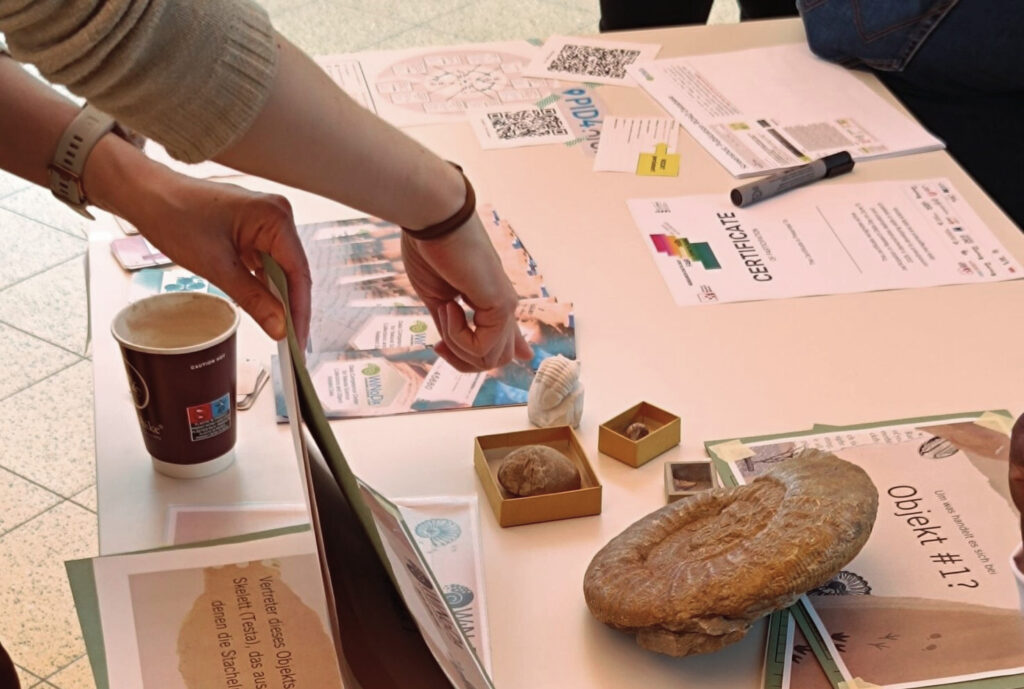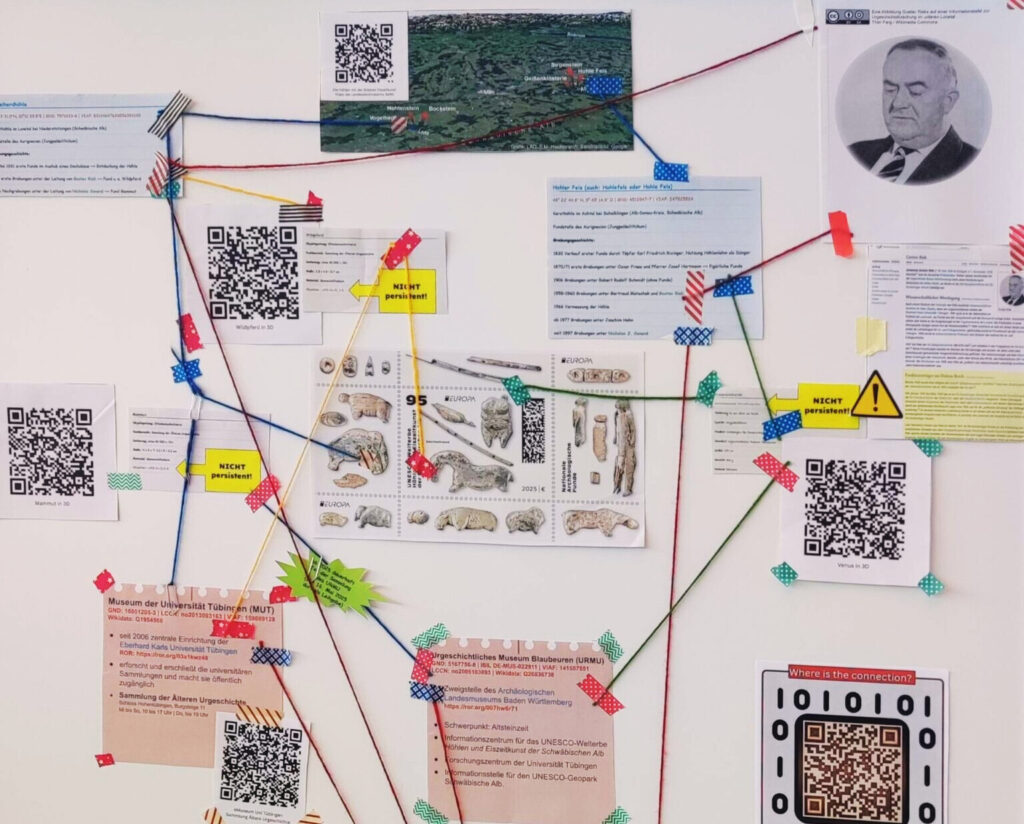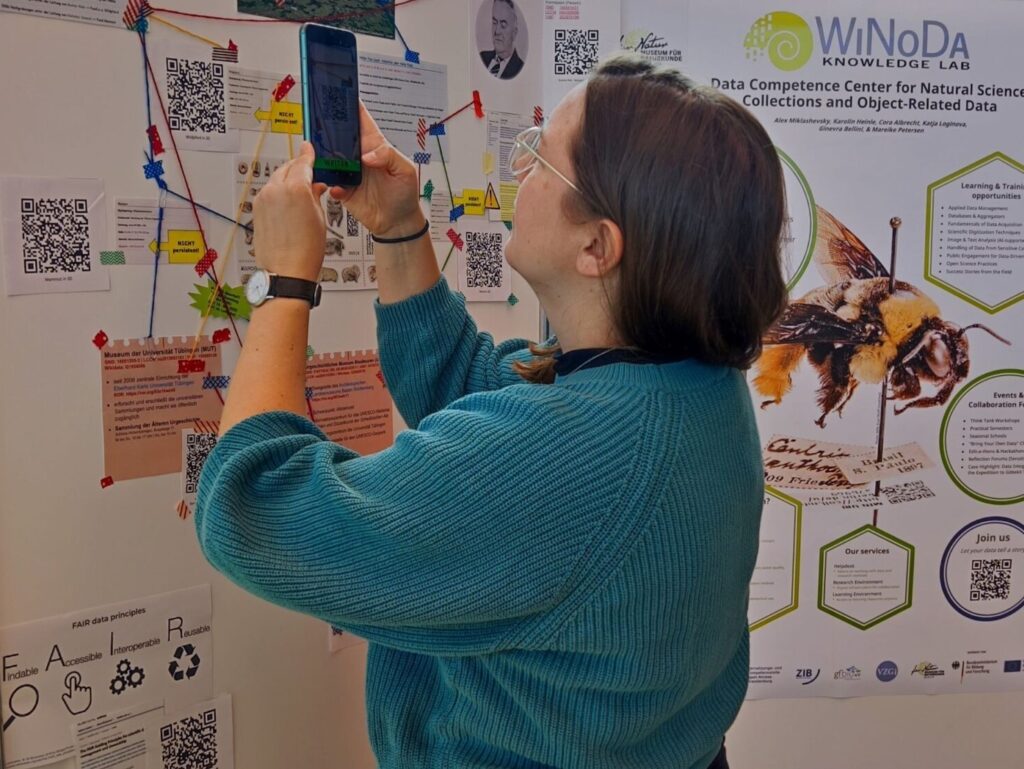For the Bremen Research Data Day, our WiNoDa colleagues from gfBio had registered us quite early for the “FAIRplay Station”. Like last year, they wanted to participate with the game “Data Detectives”, in which various objects had to be identified using metadata such as date, location, etc. The Museum of Natural History had kindly provided us with some fossils/plaster casts that were described by up to five clues.

For another perspective with more reference to this year’s theme “FAIR future skills”, we thought about how we could introduce the FAIR principles to a walk-in audience in an interactive and playful way. This is where the European stamp on national archaeological finds, which I presented in the post “Ice Age art, digital” on May 19, 2025, came in handy!
And thus the “Data Clues” were born…
The idea was to take the stamp as the starting point for a small data research project and at the same time make the trail of interlinked information visually comprehensible and tangible. Could we pick up the trail and go from the depiction of Ice Age mammoth ivory carvings on a stamp to the corresponding research dataset?
Let’s try! After all, the “F” in FAIR data stands for “Findable”!
We researched the information on four of the objects shown: We noted the dimensions, material, age, collection information and information about the place of discovery on various pieces of paper and cards on a pinboard. Using unique and, ideally, permanent identification numbers (PID – Permanent Identifier), we were able to add more and more context.
But: we couldn’t find a reference to the actual data set (at first)! Where could the link be?

Just like a crime scene board, where all the clues on a wall are connected with red string, we also displayed the connections between the information with colorful yarn.
A knowledge graph you can touch!
Visitors could decipher the connections, scan QR codes for further information and add their own ideas for further research on index cards.
At the table, we had flyers on PIDs and FAIR data and were ready to answer questions.

The aim was to make different approaches to dataset research visible and to discuss potential obstacles.
Although “our” dataset of Ice Age findings had been published in exemplary fashion, it is not (yet) as easy or intuitive to locate as one might expect. This is because it was only published in 2023 – but the discovery of the objects, their 3D digital copies, museum websites and associated publications are of course much older.
It is to be expected that all future publications about the objects will provide a reference of where the original data set is available. But it will be some time before the information is retroactively diffused into existing systems and metadata – that’s the crux of (retroactive) retro-digitization – and not just for texts.
But I am confident that it will happen – and then we can pin a new thread – linking directly from the brand to the data record!
The game “Data Clues” was published under CC-BY 4.0 on Zenodo: https://zenodo.org/records/15804032
Event website: https://www.bremen-research.de/tag-der-forschungsdaten-2025

As an academic staff at the DAI, my main responsibility for WiNoDa lies in the creation of self-study courses on discipline-specific data literacy.
Hands-on and interactive – my goal is: less technical jargon, more “aha” moments.
Because we are all working with data!
